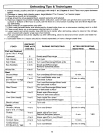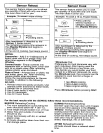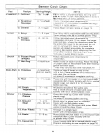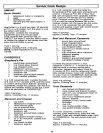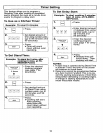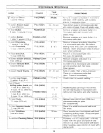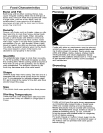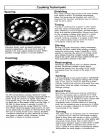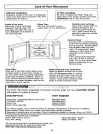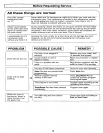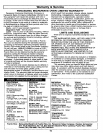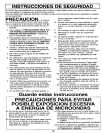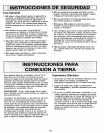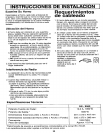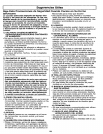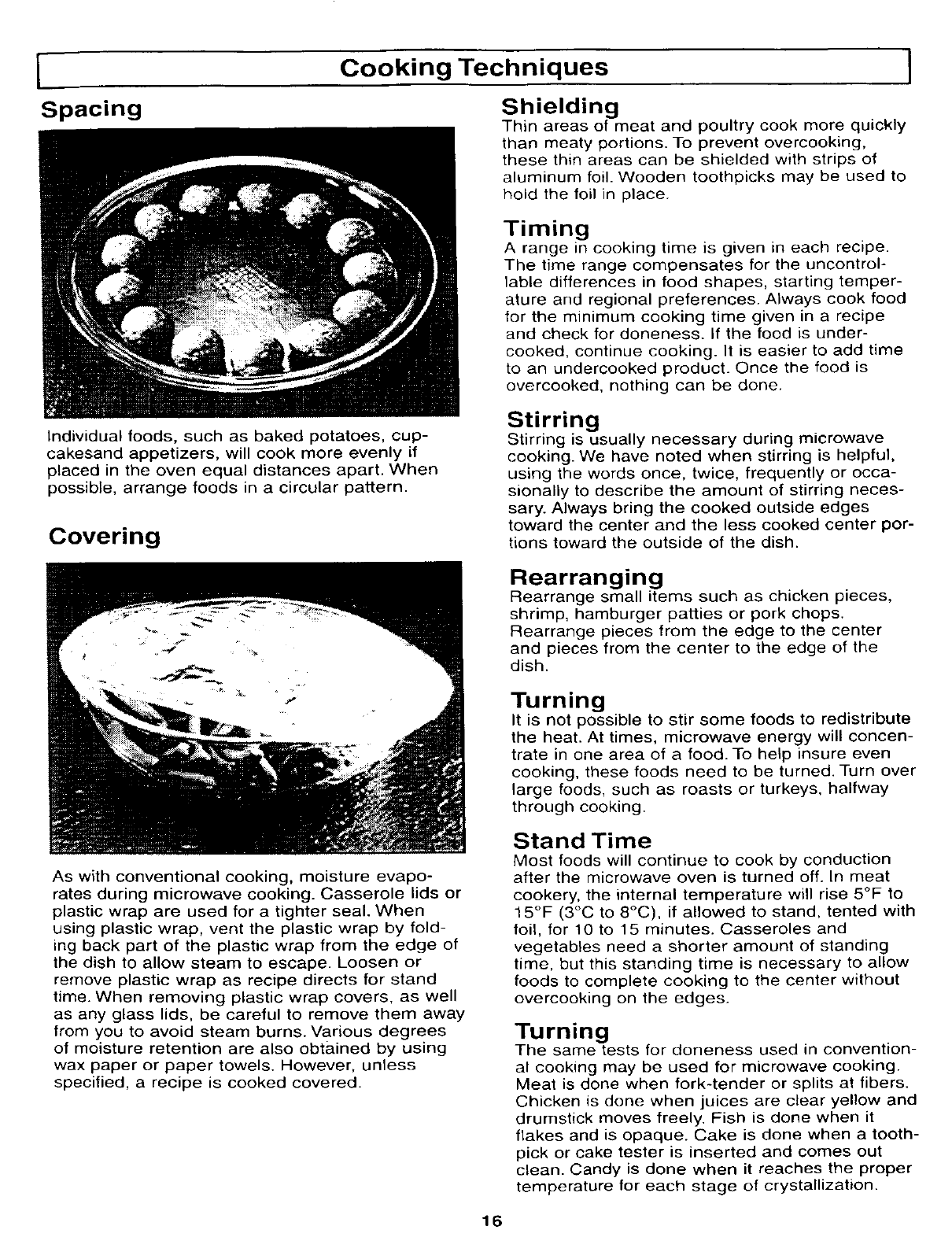
Cooking Techniques I
Spacing
Shielding
Thin areas of meat and poultry cook more quickly
than meaty portions. To prevent overcooking,
these thin areas can be shielded with strips of
aluminum foil. Wooden toothpicks may be used to
hold the foil in place.
Timing
A range in cooking time is given in each recipe.
The time range compensates for the uncontrol-
lable differences in food shapes, starting temper-
ature and regional preferences. Always cook food
for the minimum cooking time given in a recipe
and check for aloneness. If the food is under-
cooked, continue cooking. It is easier to add time
to an undercooked product. Once the food is
overcooked, nothing can be done.
Individual foods, such as baked potatoes, cup-
cakesand appetizers, will cook more evenly if
placed in the oven equal distances apart. When
possible, arrange foods in a circular pattern.
Covering
Stirring
Stirring is usually necessary during microwave
cooking. We have noted when stirring is helpful,
using the words once, twice, frequently or occa-
sionally to describe the amount of stirring neces-
sary. Always bring the cooked outside edges
toward the center and the less cooked center por-
tions toward the outside of the dish.
Rearranging
Rearrange small items such as chicken pieces,
shrimp, hamburger patties or pork chops.
Rearrange pieces from the edge to the center
and pieces from the center to the edge of the
dish.
As with conventional cooking, moisture evapo-
rates during microwave cooking. Casserole lids or
plastic wrap are used for a tighter seal. When
using plastic wrap, vent the plastic wrap by fold-
ing back part of the plastic wrap from the edge of
the dish to allow steam to escape. Loosen or
remove plastic wrap as recipe directs for stand
time. When removing plastic wrap covers, as well
as any glass lids, be careful to remove them away
from you to avoid steam burns. Various degrees
of moisture retention are also obtained by using
wax paper or paper towels. However, unless
specified, a recipe is cooked covered.
Turning
It is not possible to stir some foods to redistribute
the heat. At times, microwave energy will concen-
trate in one area of a food. To help insure even
cooking, these foods need to be turned. Turn over
large foods, such as roasts or turkeys, halfway
through cooking.
Stand Time
Most foods will continue to cook by conduction
after the microwave oven is turned off. In meat
cookery, the internal temperature will rise 5°F to
15°F (3°C to 8°C), if allowed to stand, tented with
foil, for 10 to 15 minutes. Casseroles and
vegetables need a shorter amount of standing
time, but this standing time is necessary to allow
foods to complete cooking to the center without
overcooking on the edges.
Turning
The same tests for doneness used in convention-
al cooking may be used for microwave cooking.
Meat is done when fork-tender or splits at fibers.
Chicken is done when juices are clear yellow and
drumstick moves freely. Fish is done when it
flakes and is opaque. Cake is done when a tooth-
pick or cake tester is inserted and comes out
clean. Candy is done when it reaches the proper
temperature for each stage of crystallization.
16




